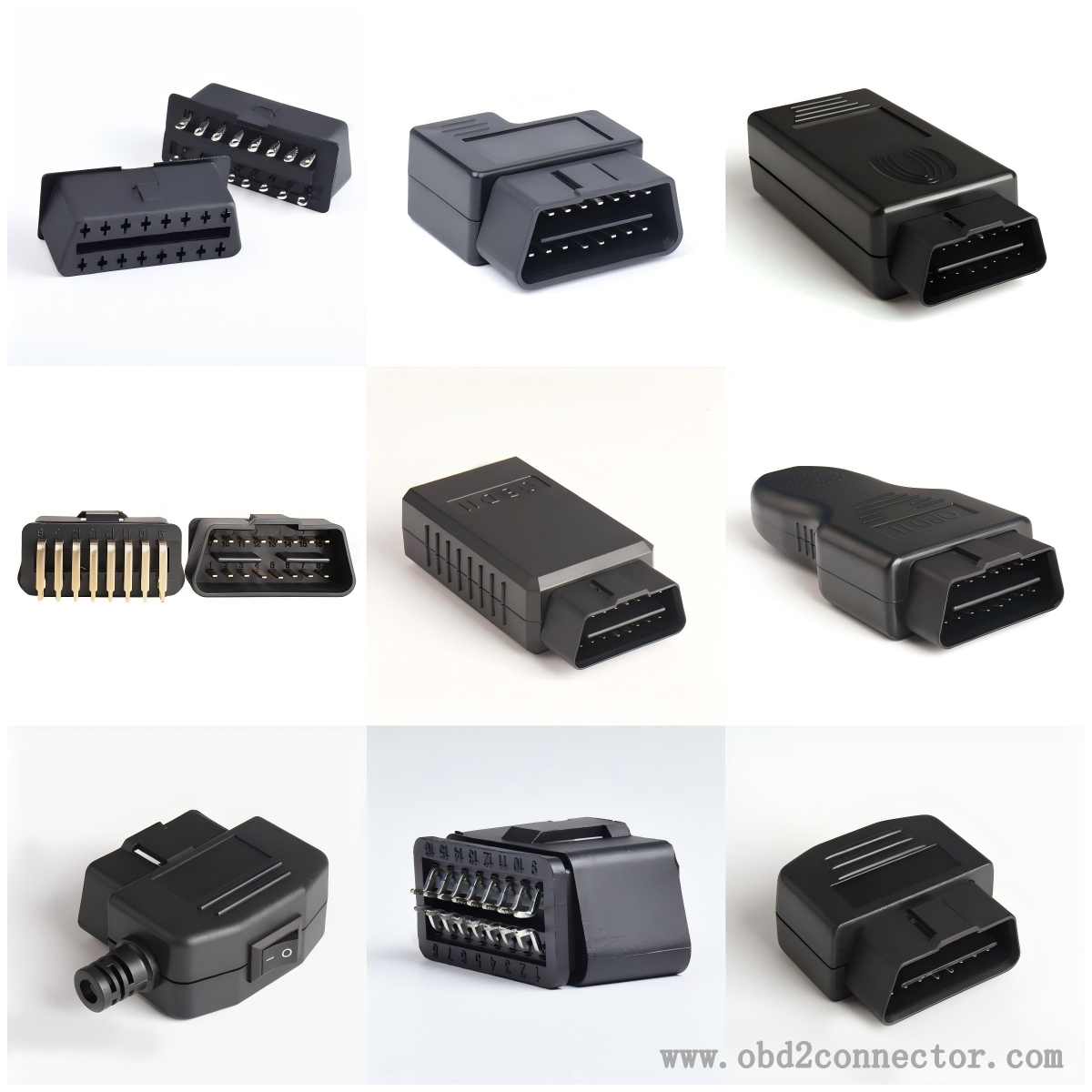What are the common faults of OBD2 male connector?
Common faults of OBD2 male connectors include the following categories:
physical damage
Pin bending or breakage: During the insertion and extraction process, improper force or external impact may cause the pins of the male connector to bend or break. This will affect the contact between the connector and the vehicle OBD2 interface, resulting in data transmission interruption or instability.
Shell rupture: External impact, aging caused by long-term use, or improper storage methods can all cause the shell of the male connector to rupture. Shell rupture not only affects the appearance of the connector, but may also expose internal circuits, increasing the risk of short circuits or other faults.

poor contact
Oxidation or corrosion: After prolonged use, the surface of the pins of the male connector may oxidize, or the pins may corrode due to factors such as the humid environment and corrosive gases inside the vehicle. This will increase the contact resistance between the pins and the vehicle OBD2 interface, affecting the quality of data transmission and potentially causing issues such as data loss, errors, or communication interruptions.
Loosening: The vibration of the vehicle, wear and tear caused by long-term use, and unstable installation may all cause loosening between the male connector and the vehicle OBD2 interface. Loosening can lead to unstable contact, intermittent data transmission, and even inability to establish a connection in severe cases.
electrical fault
Short circuit: If the insulation of the internal circuit of the male connector is damaged, or if foreign objects enter and cause contact between the circuits, it may cause a short circuit fault. Short circuit can cause abnormal current, which may damage the connector itself and the vehicle's OBD2 system, and even cause faults in other electrical equipment.
Open circuit: The wires inside the circuit may break due to aging, stretching, compression, and other reasons, causing the circuit to disconnect and data transmission to be impossible. In addition, if the solder joints inside the connector become loose or detached, it can also cause open circuit faults.
Compatibility issues
Protocol incompatibility: Although OBD2 has a unified standard, different car manufacturers may make some extensions or modifications based on the standard. If the device connected to the male connector does not support vehicle specific protocol extensions, it may not be able to read certain data or perform specific functions properly, resulting in compatibility issues.
Version incompatibility: With the continuous development of automotive technology, the OBD2 standard is also constantly being updated and improved. Older versions of male connectors may not be fully compatible with vehicles that adopt the new version of the OBD2 standard, resulting in some functions being unusable or data transmission being inaccurate.